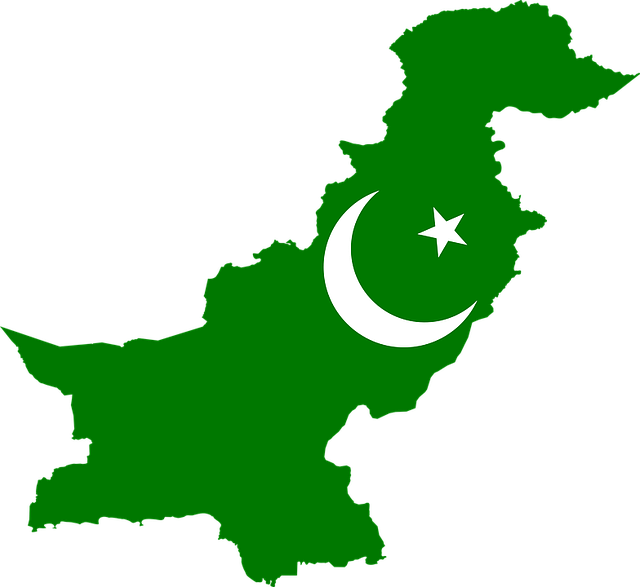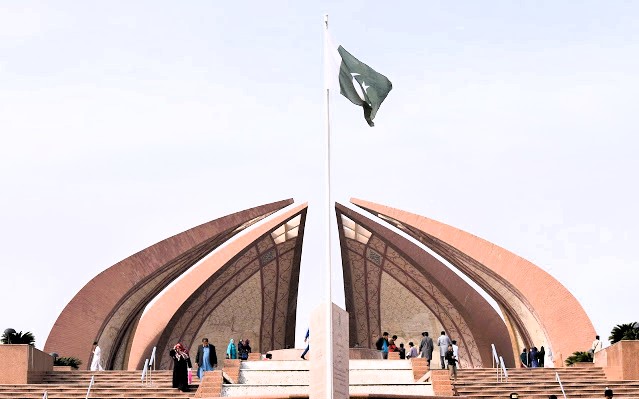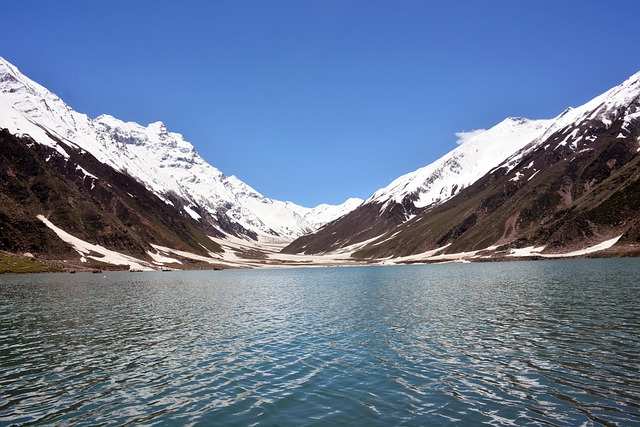Pakistan’s Top 10 Eco-Friendly Cities: Where Green Living Meets History and Culture
Pakistan’s Top 10 Eco-Friendly Cities, here’s a comprehensive, city-by-city guide to the nation’s top 10 eco-friendly cities .Pakistan is making impressive strides in sustainable urban development, blending environmental responsibility with rich history and vibrant local life. – why they’re green, what makes them historically significant, their best tourist attractions, unique markets, hidden gems, and tips for visitors.https://mrpo.pk/lake-saiful-muluk/

Historical Significance:
Built in the 1960s as the new capital, Islamabad was designed for efficiency and harmony with nature, making it one of South Asia’s best-planned cities.
Capital Smart City: A Beacon of Eco-Friendliness
Capital Smart City (CSC), located near Islamabad, stands as Pakistan’s most eco-friendly urban development, blending smart technology with environmental stewardship. Here’s what makes it a leader in sustainable urban planning:
1. Green Spaces and Biodiversity
CSC reserves over 30% of its land for green spaces, including theme parks (e.g., Culinary Park with edible plants) and an 18-hole golf course designed to harmonise leisure with nature14. Its Horticulture Department manages a nursery housing 300,000+ plants, ensuring self-sufficiency in landscaping and reducing reliance on external suppliers1.
2. Renewable Energy and Smart Infrastructure
The city prioritizes renewable energy sources like solar power for street lighting and energy-efficient buildings, minimising carbon emissions23. Smart grids optimise energy distribution, while eco-friendly transportation (e.g., electric buses) and walkable, cycling-friendly zones reduce reliance on fossil fuels23.
3. Sustainable Urban Planning
CSC’s compact, neighborhood-centric design integrates green belts, parks, and commercial areas, promoting mixed-use development and reducing urban sprawl14. Water conservation measures and smart waste management systems (e.g., optimized garbage collection routes) further enhance its eco-friendly profile23.
4. Community-Centric and Technological Integration
Residents benefit from smart home automation, digital governance platforms, and public-private partnerships that ensure efficient resource use and innovation24. Biophilic urbanism—designing spaces that connect residents to nature—enhances air quality and well-being12.
Why CSC Stands Out
While cities like Lahore and Karachi face pollution and resource scarcity, CSC’s holistic approach to sustainability positions it as a model for Pakistan’s urban future. Its focus on SDGs, climate resilience, and inclusive growth aligns with global eco-friendly standards, though broader adoption of such practices remains a national challenge24.
Final Thoughts:
Capital Smart City’s blend of green infrastructure, renewable energy, and smart governance makes it Pakistan’s eco-friendly leader. As urbanisation intensifies, its blueprint for sustainable development offers hope for balancing growth with environmental protection.
1. Islamabad: The Green Capital

Eco-Friendly Features:
Islamabad stands out for its massive tree-planting drives, smart city planning, and green transportation. The city hosts events like climate walks and cycling rallies to promote eco-friendly lifestyles and sustainable mobility6. Modern initiatives like electric buses, extensive parks, and green belts further its reputation as Pakistan’s greenest city.
Islamabad’s Best Attractions For Foreign Visitors
Islamabad, Pakistan’s capital, offers a mix of cultural heritage, natural beauty, and modern infrastructure that appeals to global travellers. Below are the top destinations to prioritise:
Faisal Mosque: Architectural Icon
A UNESCO-nominated landmark, Faisal Mosque’s Bedouin tent-inspired design and Turkish chandeliers make it a must-visit. Its gardens offer panoramic views of the Margalla Hills, and guided tours provide insights into its history124.
Guided tours of Faisal Mosque provide insights into its Bedouin-inspired architecture and spiritual significance. Visitors learn about its history, design, and role as a symbol of Islamic heritage. Private tours often include hotel pickup, bottled water, and professional guides23.
Margalla Hills: Nature’s Playground 
For outdoor enthusiasts, Margalla Hills National Park features hiking trails (e.g., Trail 5), rock climbing, and birdwatching. Daman-e-Koh and Pir Sohawa viewpoints provide sweeping vistas of Islamabad and Rawal Lake125.
Pakistan Monument Museum: Historical Hub
Located in Shakarparian Hills, this museum showcases Pakistan’s history through eight interconnected petals symbolising its provinces. Exhibits include artefacts from the Mughal era and the 1947 independence movement247.
The flower-petal monument and its museum are covered in cultural tours, highlighting national unity and historical artefacts like Mughal-era relics. Tours may include the Shakarparian Hills for panoramic views3.
Saidpur Village: Cultural Immersion
This 500-year-old village blends Mughal architecture with modern cafes and art galleries. Visitors can explore its mosque, havelis, and traditional crafts, offering a glimpse into Pakistan’s heritage124.
Guided visits to Saidpur Village immerse travellers in 500-year-old Mughal architecture, traditional crafts, and modern cafes. Tours emphasise its pluralistic past and cultural revival efforts13.
 Lake View Park: Leisure and Adventure
Lake View Park: Leisure and Adventure
Adjacent to Rawal Lake, this park features boating, rock climbing, and picnic spots. Its food court and play areas make it ideal for families268.
Lok Virsa Heritage Museum: Cultural Treasure Trove
Dedicated to Pakistan’s folk art, music, and crafts, this museum hosts live performances and workshops. Highlights include traditional textiles and indigenous artifacts246.
This museum’s folk art exhibits and live performances are often part of cultural tours, showcasing Pakistan’s indigenous traditions and textiles. Workshops and interactive displays enhance the experience13.
Islamabad Zoo: Family-Friendly Fun
Spread over 82 acres, the zoo houses 200+ species, including monkeys, big cats, and birds. Its play areas and souvenir shops cater to all ages4.
Giga Mall and Safa Gold Mall: Modern Shopping
For retail therapy, Giga Mall and Safa Gold Mall offer international brands, dining, and entertainment. Ideal for souvenirs or a break from sightseeing38.
Shakarparian Hills: Scenic Walks
A terrace garden with panoramic views of Islamabad and Rawal Lake, perfect for sunrise/sunset strolls or photography34.
Murree: A Day Trip Escape
Just 50 km away, this hill station offers cool climates, colonial-era architecture, and tea houses. A popular retreat from Islamabad’s urban bustle15.
Practical Tips for Foreign Tourists
Best Time to Visit
-
Spring (March–May) or Autumn (September–November) for mild weather.
- Transport: Hire a taxi or rent a car for flexibility.
- Dress Code: Modest attire for mosques and cultural sites.
- Safety: Avoid carrying large sums of cash; use credit cards at malls.
Islamabad’s blend of modern infrastructure, natural beauty, and rich history makes it a compelling destination for foreign tourists. From Faisal Mosque’s grandeur to Margalla Hills’ trails, every attraction offers a unique lens into Pakistan’s culture and landscapes.
Guided Tours for Islamabad’s Historical Sites
Islamabad offers organised tours to explore its modern landmarks, cultural hubs, and natural wonders, blending history with contemporary appeal. Below are the key options:
5. Taxila Ruins and Historical Peshawar Tours
While Taxila (a UNESCO site near Islamabad) and Peshawar are outside the city, full-day guided tours explore their ancient Buddhist ruins and Mughal-era landmarks, offering a broader historical context68.
Tour Operators and Packages
-
Islamabad Tour Guide: Offers wheelchair-accessible tours with tailored itineraries.
-
Exploria Tours: A women-owned agency providing sightseeing tours and cultural insights.
-
Peek Travel: Private tours covering Faisal Mosque, Lake View Park, and Pakistan Monument, with hotel transfers and guides24.
-
GetYourGuide: Half-day tours focusing on modern architecture and natural escapes like the Margalla Hills5.
Practical Tips
-
Entry Fees: Most sites (e.g., Faisal Mosque) are free, but museums like Lok Virsa may charge a nominal fee13.
-
Dress Code: Modest attire is required for mosques and cultural sites3.
Final Thoughts:
Guided tours in Islamabad unlock the city’s cultural depth, from modern marvels like Faisal Mosque to ancient villages like Saidpur. By partnering with local operators, travellers gain expert insights and seamless logistics, ensuring a memorable journey through Pakistan’s capital.
Hidden Gem:
- Shah Allah Ditta Caves: A 1,000-year-old archaeological site linked to Alexander the Great’s campaigns, these caves feature Buddhist carvings, intricate murals, and rock shelters. Part of the Kabul-Taxila trade route, they offer a window into Islamabad’s pre-Islamic history. Tip: Combine with a hike through Margalla Hills for panoramic views12.
Unique Market:
-
Jinnah Super Market: Jinnah Super Market is a popular shopping destination in Islamabad, Pakistan. Named after the country’s founder, Muhammad Ali Jinnah, it’s a bustling marketplace offering a wide range of products, including clothing, accessories, home goods, and more. The market is known for its vibrant atmosphere and diverse shopping options, making it a favourite among locals and visitors alike. You can find everything from traditional Pakistani attire to modern fashion trends, as well as souvenirs and everyday essentials.
Islamabad’s Hidden Natural Hiking Spots
While Margalla Hills dominate Islamabad’s hiking scene, several lesser-known trails and natural wonders await exploration. Below are the top hidden gems for nature lovers:
1. Shumber Waterfall: A Seasonal Marvel
A moderate 30-minute trek through Margalla Hills leads to this seasonal waterfall, active during monsoon (June–September). Surrounded by lush greenery and large rocks, it’s ideal for photography and picnics. Tip: Visit early morning to avoid crowds and ensure safety.
2. Makhniyal Second Ridge Trail: Panoramic Lake Views
Located behind Margalla’s main trails, this jeep-friendly route offers breathtaking vistas of Rawal Lake and Khanpur Dam. While challenging for hikers, adventurous groups and off-road enthusiasts can explore its pine forests and steep climbs.
3. Trail 7: CDA’s New Adventure Hub
Launched in 2022, this 5-km trail in Margalla Hills National Park features a seasonal water stream (active June–September) and moderate to intense terrain. Beginners can opt for a 2.5-km hike, while experienced trekkers tackle the full route. Highlight: Connects Sector C-12 to Kanthala with wildlife sightings.
4. Bruti Waterfall Trek: Spiritual Serenity
Near Bari Imam Shrine, this short hike through Margalla Hills leads to a tranquil waterfall. The trail blends natural beauty with Sufi history, offering a peaceful escape from urban noise.
5. Monal Nature Reserve: Panoramic Vistas
While not entirely hidden, this forested area near Monal Restaurant provides less crowded trails with panoramic views of Margalla Hills. Ideal for birdwatching and easy hikes.
Tips for Explorers
-
Best Time:
-
Shumber Waterfall: Monsoon season (June–September).
-
Trail 7: Spring/Autumn for mild weather.
-
-
Gear: Wear sturdy shoes; carry water and snacks.
-
Safety: Avoid Trail 6 after sunset (monkey activity) and Makhniyal during rains (steep terrain).
Islamabad’s hidden natural spots—from Shumber Waterfall’s seasonal charm to Trail 7’s rugged terrain—promise adventure and serenity. For those willing to venture off the beaten path, these gems offer a deeper connection to nature and the city’s uncharted beauty.
Islamabad’s Best Family-Friendly Hiking Trails
Islamabad offers gentle, well-marked trails ideal for families with young children, combining natural beauty and cultural experiences. Below are the top picks:
1. Trail 5: Easy Terrain and Scenic Views
Starting Point: Sector F-5.
Distance: 3–4 km (1–2 hours).
Difficulty: Moderate-to-easy, with seasonal water springs and tree cover.
Highlights:
-
Kid-friendly: Wide paths and minimal steep sections.
-
Connects to Trail 3: Extend the hike to Pir Sohawa Road for panoramic views.
Tip: Visit during spring/autumn for mild weather.
2. Trail 3 to Trail 5C Diversion
Starting Point: Sector F-6.
Distance: 2.5–3.5 hours.
Difficulty: Moderate (steep ascents initially), but well-marked.
Highlights:
-
Family-friendly: Rated 4.9/5 for safety and accessibility.
-
Ends at Pir Sohawa: Access Monal Restaurant for post-hike meals.
Tip: Start early to avoid midday heat.
3. Trail 6: Scenic Pastures and Play Areas
Starting Point: Near Islamabad Zoo.
Distance: 1–1.5 hours (partial trail).
Difficulty: Easy (flat terrain).
Highlights:
-
Clearing/pasture: Ideal for picnics and playtime.
-
Connects to Jabbi Village: Extend the hike for older kids.
Tip: Avoid evening hikes due to monkey activity.
4. Daman-e-Koh to Cactus Ridge
Starting Point: Daman-e-Koh viewpoint.
Distance: 1–1.5 hours.
Difficulty: Easy (gentle slopes).
Highlights:
-
Panoramic views: Rawal Lake and Islamabad skyline.
-
Cactus Ridge: Unique flora and photography spots.
Tip: Use golf carts from the parking area for tired kids.
5. Margalla Hills National Park (Short Routes)
Starting Point: Sector E-7 (near Faisal Mosque).
Distance: 1–2 hours.
Highlights:
-
Birdwatching: Spot parakeets and peacocks.
-
Mountain biking: Kid-friendly tracks for older children.
Tip: Avoid Trail 1 (steep ridges) and opt for shorter loops.
Practical Tips for Families
-
Safety: Carry water, snacks, and sunscreen.Gear: Sturdy shoes and bug repellent (for monkeys on Trail 6).
-
Best Time: Spring/Autumn for mild weather.
-
Nearby Attractions:
-
Lake View Park: Boating and play areas post-hike.
-
Saidpur Village: Cultural immersion and family-friendly dining.
-
Final Thoughts:
Islamabad’s family-friendly trails—like Trail 5 and Daman-e-Koh—balance adventure with safety, offering scenic vistas and cultural stops. For young children, shorter routes with picnic spots and easy terrain are ideal, while older kids can tackle moderate trails like Trail 3.
Visitor Tips:
Visit in spring or autumn for pleasant weather. Early mornings are best for exploring markets and parks.
2. Lahore: The ECO Tourism Capital 2027
Eco-Friendly Features:
Lahore is investing in clean water, “Blue Roads” that reflect heat, and urban forests. Its green initiatives helped it earn the prestigious title of ECO Tourism Capital for 2027, opening its doors to global tourism and cultural exchange578.
Historical Significance:
With over a thousand years of history, Lahore was once the Mughal Empire’s capital and remains Pakistan’s cultural heart.
Top Attractions:
-
Badshahi Mosque
-
Lahore Fort (UNESCO World Heritage)
-
Shalimar Gardens
-
Walled City
Hidden Gem:
-
Hiran Minar-Mughal-era hunting retreat with a peaceful lake.
Unique Market:
-
Anarkali Bazaar-one of South Asia’s oldest, famous for clothes, jewelry, and street food.
Visitor Tips:
Visit in the morning or evening for cooler weather. Don’t miss spring’s Basant festival and Eid shopping nights.
3. Rawalpindi: Compact, Clean, and Historic
Eco-Friendly Features:
Rawalpindi’s compact city design encourages walking and cycling. The city is known for its cleanliness and growing use of solar energy.
Historical Significance:
A key British colonial garrison town, Rawalpindi has deep military roots and is close to ancient settlements.
Top Attractions:
-
Ayub National Park
-
Rawat Fort
-
Saddar Bazaar
Hidden Gem:
-
Nearby Ayubia National Park-lush hiking trails and wildlife.
Unique Market:
-
Saddar Bazaar-bustling with everything from electronics to traditional goods.
Visitor Tips:
Weekday mornings are best for markets. Try local snacks and enjoy the lively bazaars.
4. Karachi: City of Lights and Green Hope
Eco-Friendly Features:
Karachi is embracing community recycling, creating new parks, and improving water management. Despite its size, the city is pushing for greener public spaces and sustainable practices.
Historical Significance:
Once a small fishing village, Karachi became Pakistan’s first capital and remains its economic powerhouse.
Top Attractions:
-
Clifton Beach
-
Quaid-e-Azam’s Mausoleum
-
Pakistan Maritime Museum
-
Empress Market
Hidden Gem:
-
Churna Island-snorkeling and marine life away from the city crowds.
Unique Market:
-
Empress Market-historic and lively, perfect for spices and textiles.
Visitor Tips:
Visit markets before noon for the best selection. Use public transport or ride-hailing apps to avoid traffic.
5. Peshawar: Gateway to the Frontier
Eco-Friendly Features:
Peshawar is planting urban forests and protecting local biodiversity, making green spaces a priority even in a rapidly growing city.
Historical Significance:
Over 2,000 years old, Peshawar was a major stop on the Silk Road and boasts a rich blend of cultures.
Top Attractions:
-
Qissa Khwani Bazaar
-
Bala Hisar Fort
-
Peshawar Museum
Hidden Gem:
-
Sethi Houses-historic mansions with intricate woodwork.
Unique Market:
-
Qissa Khwani Bazaar-famous for carpets, spices, and tea houses.
Visitor Tips:
Morning visits are best for markets. Respect local traditions and try the famous chapli kebab.
6. Bahawalpur: The City of Palaces and Clean Streets
Eco-Friendly Features:
Bahawalpur excels in waste management and green corridors, setting a standard for smaller cities.
Historical Significance:
Once a princely state, Bahawalpur is renowned for its grand palaces and royal heritage.
Top Attractions:
-
Noor Mahal
-
Derawar Fort
-
Bahawalpur Zoo
-
Lal Suhanra National Park
Hidden Gem:
-
Cholistan Desert-camel safaris and star-gazing near Derawar Fort.
Unique Market:
-
Cholistan Bazaar-local crafts, camel leather goods, and textiles.
Visitor Tips:
Visit in the cooler months. Markets are lively during festivals and the Cholistan Jeep Rally.
7. Gujranwala: Industrial Powerhouse Going Green
Eco-Friendly Features:
Gujranwala’s factories are adopting energy-efficient practices, and the city is expanding its green belts and public transport.
Historical Significance:
Birthplace of Maharaja Ranjit Singh, founder of the Sikh Empire.
Top Attractions:
-
Ghanta Ghar (Clock Tower)
-
Sheranwala Bagh
-
Jinnah Stadium
Hidden Gem:
-
Sheikhupura’s Hiran Minar-historic site with gardens, just outside the city.
Unique Market:
-
Androon Gujranwala Bazaar-traditional clothes, shoes, and local snacks.
Visitor Tips:
Weekday mornings are best for shopping. Try the city’s famous sweets.
8. Kharian: Green Neighborhoods and Peaceful Living
Eco-Friendly Features:
Kharian is designed for walkability, with lots of trees, parks, and water features.
Historical Significance:
Known for its large overseas Pakistani community, bringing fresh ideas and investment.
Top Attractions:
-
Kharian Golf Club
-
Nearby Mangla Dam
Hidden Gem:
-
Mangla Dam-boating, fishing, and sunset picnics.
Unique Market:
-
Kharian Market-authentic glimpse of local life, fresh produce, and textiles.
Visitor Tips:
Enjoy walking or biking around. Visit markets in the morning for the freshest goods.
9. Haripur: Nature’s Sanctuary
Eco-Friendly Features:
Haripur focuses on restoring ecosystems, using solar power, and promoting sustainable farming.
Historical Significance:
Founded by the Sikhs in the 19th century, Haripur is known for its natural beauty.
Top Attractions:
-
Khanpur Dam
-
Hazara University
-
Havelian (gateway to the north)
Hidden Gem:
-
Tarbela Dam-scenic views and hiking trails.
Unique Market:
-
Haripur Bazaar-fresh produce, spices, and handmade crafts.
Visitor Tips:
Markets are best in the morning. Bring binoculars for bird-watching and enjoy local honey.
10. Abbottabad: Cool, Green, and Historic
Eco-Friendly Features:
Abbottabad’s cool climate, community gardens, and affordable green housing make it a model for eco-friendly living.
Historical Significance:
Founded by the British in the 19th century, Abbottabad is a gateway to the northern mountains.
Top Attractions:
-
Shimla Hill
-
Harnoi Lake
-
St. Luke’s Church
-
Ayubia National Park (nearby)
Hidden Gem:
-
Miranjani Trek-hiking to the region’s highest peak with stunning Himalayan views.
Unique Market:
-
Main Bazaar Abbottabad-woolen clothes, handicrafts, and fresh produce.
Visitor Tips:
Pack a jacket for cool mornings. Explore markets early and enjoy local tea.
Market Events and Festivals
Markets across these cities come alive during:
-
Eid and Ramadan: Special food stalls, decorations, and late hours.
-
National Holidays: Patriotic goods and cultural displays.
-
Seasonal Events: Basant in Lahore, Cholistan Jeep Rally in Bahawalpur, and flower shows in Abbottabad.
-
Local Fairs: Handicraft and food festivals, especially during harvest time.
Best Time to Visit Markets:
Early mornings (8–11 AM) on weekdays are ideal for fresh goods and fewer crowds. During festivals, expect lively atmospheres and extended hours.
Final Thoughts
Pakistan’s top 10 eco-friendly cities are shining examples of how sustainability, history, and vibrant local life can come together. Whether you’re exploring ancient forts, shopping in colorful bazaars, or relaxing in green parks, these cities offer unforgettable experiences for every traveler.
References:1 Capital Smart City Islamabad’s sustainable development2 Pakistan Green Taxonomy-Ministry of Climate Change3 Capital Smart City’s master plan and eco-initiatives4 Green construction’s impact on urban Pakistan578 Lahore’s designation as ECO Tourism Capital 20276 Islamabad’s climate walk and cycling event by Pak-EPA
Citations:
- https://reallandmanagement.pk/top-investment-opportunities-in-pakistans-leading-smart-cities-2025/
- https://www.mocc.gov.pk/SiteImage/Misc/files/Draft_Pakistan_Green_Taxonomy_Feb2025.pdf
- https://plotspk.com/capital-smart-city/
- https://greenfuture.pk/how-green-construction-can-transform-pakistans-cities/
- https://www.travelandtourworld.com/news/article/turkiye-iran-afghanistan-pakistan-azerbaijan-kazakhstan-kyrgyzstan-tajikistan-turkmenistan-and-uzbekistan-celebrate-lahores-historic-selection-as-the-eco-tourism-capital-2027/
- https://environment.gov.pk/NewsDetail/ODAzYzBlODMtMWNlMC00Y2ZiLTk1OGMtODBhOTcyMTg3ZjMy
- https://www.urdupoint.com/en/pakistan/lahore-to-shine-globally-as-eco-tourism-capit-1969873.html
- https://www.brecorder.com/news/40359680
